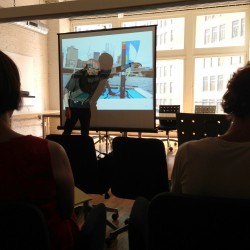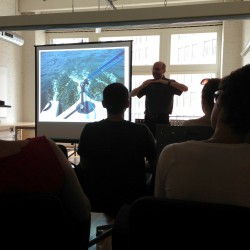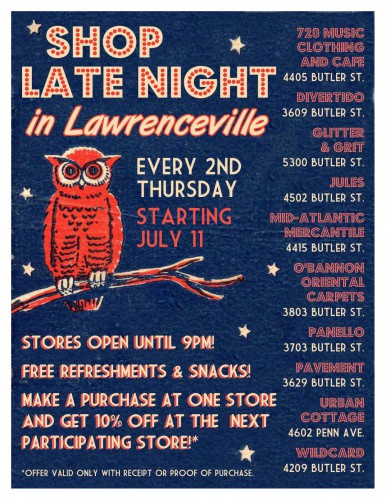John Norton came to Pittsburgh from Australia in the early ‘80s, but it wasn’t until he moved Downtown in 2005 that he seriously began considering sailing the three rivers.
As he explained at a lunchtime talk on June 28 at Bruno Works, being immersed in downtown life and exploring the river trails made him wonder why he couldn’t have a sailboat. After all, there were already kayaks on the rivers. Why couldn’t the experienced sailor have a sailboat docked nearby, ready to be set out on whenever the conditions best suited him?
Few had seriously considered sailing the waters by The Point before (the Pittsburgh Sailing League is now defunct, plus, they would “cheat” and block the waterways for their excursions), so the University of Pittsburgh professor faced several problems. First of all, people thought he was crazy for trying. The complicated wind and water conditions, tricky topography of Pittsburgh, and bustling river traffic made the endeavor unfavorable, to say the least.
Sailors, by nature, are very cautious people, and those who have ever sailed before can understand why. A sailboat is completely at the mercy of swiftly-changing weather patterns. An experienced sailor needs to be able to react quickly and accurately. At The Point and on the rivers, while unpowered watercrafts have the right-of-way, they still are at the mercy of powerful speed and river boats.
Potentially worst of all are the barges, which do have the right-of-way since they are so large, fast, and hard to maneuver. Whenever John notices a barge, he immediately pulls over to the shore and waits for it to pass, since the situation can quickly and irrevocably become dangerous– potentially fatal. There is a lot of barge traffic on the rivers but they do move in definite channels, and maps of their routes are available online. Generally avoiding the center of the rivers is favorable.
Secondly, a lot of prime waterfront has already been spoken for, making it difficult to find a marina. He wanted a dock that was downstream from The Point, so that if the wind conditions died during his sail he could simply float back home. He managed to find a suitable spot by the West End Bridge to keep his Hobie Bravo, a 1-2 person catamaran he chose for its rugged construction, speed, ease-of-use, and lack of center hull (which has a less chance of getting stuck on something).
So in 2009, John set out on his 12-foot boat to sail The Point. Trial and error played a large part in those early sails. He began maintaining and evaluating reports of the river currents and wind conditions on the days he was sailing, noting how they affected his journey. Ideally for sailing, the current is flowing one way and the wind is blowing, more strongly, in the other direction. However, the winds and currents where the rivers meet change frequently and unexpectedly.
Northwest winds are the best for sailing the Ohio and the Monongahela Rivers, but not the Allegheny, as the buildings of the North Shore block the gusts. Mount Washington also causes significant problems in terms of wind direction. The ridge blocks southwest winds (which there are an abundance of this time of year), and gaps in the hills cause erratic winds from every which direction to swoop down the river.
“You spend a lot of time looking at flags,” John said about figuring out the wind direction when he’s on his boat. “I wish they put flags all on the river. I’m hoping the [Point State Park] fountain will be a bit of a flag.”

John maps his sail and posts them on his website. This one is of a particularly fast sail, with speeds shown in different colors. Image courtesy of John Norton.
Forecasts for both the wind and current are available online on multiple websites, although they should be cautiously interpreted as they aren’t always reliable. John has spent a significant amount of time and effort figuring out these patterns and what it means for sailing The Point. He posts all this data, plus his overall experiences and a GPS map of his routes, on his website and encourages others to use it to educate themselves.
So why does John do it? Risk all those potential dangers, meticulously noting and scrutinizing weather conditions? For the fun, of course. He describes it as a visceral, challenging, yet rewarding, wonderful experience, beautifully explained in a bit of prose he wrote on his website titled “Why We Sail”:
“We look down at the water and watch the little bits of weed and debris pass. We look back at our rising wake and listen to the quiet gurgle of water moving under the hull. ‘We’re sailing,’ we say. It is a magical feeling.”





















